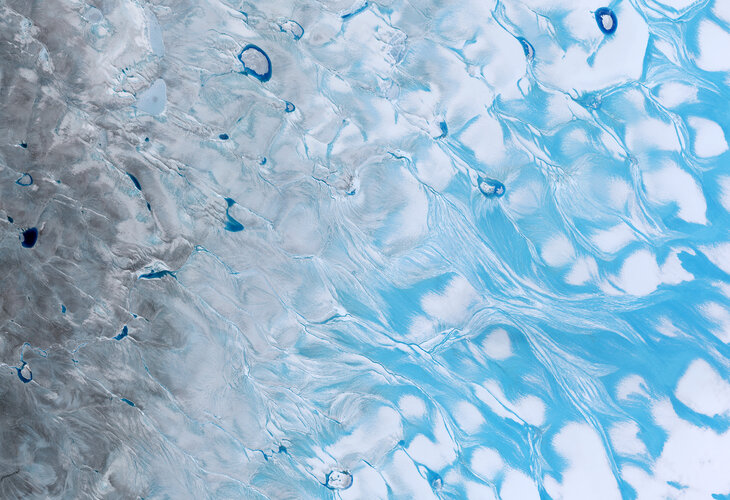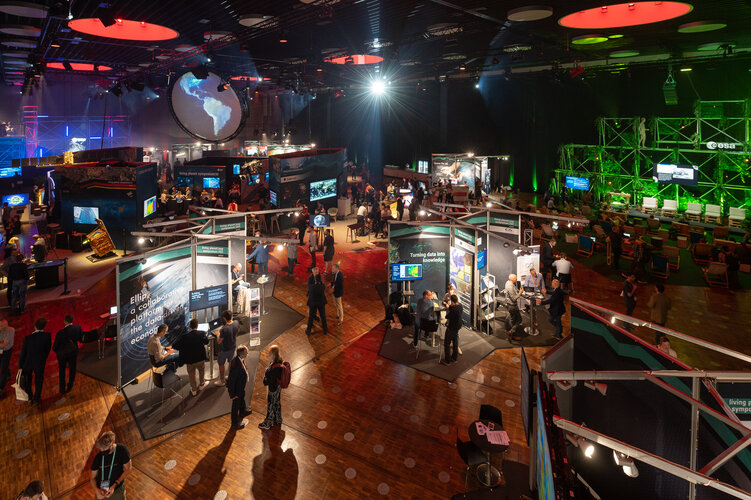
Copernical Team
Vision changes in space

Understanding the effects of microgravity on the human body is essential in enabling astronauts to travel through the harsh environment of space for months, or even years. Significant changes to the body's skeletal and muscle systems have been studied for decades, and strategies to maintain physical fitness are being applied through various countermeasures, including vigorous exercise, aboard the International Space Station. But scientists and researchers still have a lot to learn—including how time spent in space affects the eyes and brain.
Even during a trip as short as two weeks, vision changes occur for about a one-third of American astronauts. When the trip is longer—say, four to six months—that figure may double. But, before potential solutions can be proposed, scientists first have to understand what's causing these changes.
On Earth, gravity forces a body's natural blood volume downward, below the waist. Our heart forces it back up to the areas above the waist, including our eyes. But, what happens to that volume of blood and other fluids when gravity is no longer pulling them down?
The human body has an amazing ability to adapt.
Our Mars rover mission was suspended because of the Ukraine war. What we're hoping for next

Just a few months ago, we were confidently expecting to launch our rover, Rosalind Franklin, to Mars in September as part of the ExoMars mission, a collaboration between Europe and Russia. The landing was planned for June 2023. Everything was ready: the rover, the operations team and the eager scientists.
The final preparations started in February 21, with part of our team heading to Turin, Italy, to carry out the final alignment and calibration tests. All was going well, though some of the team were slightly delayed by Storm Eunice in the U.K. Three days later, they had nevertheless finished the work—leaving some wonderful data, which would help us decide where Rosalind would drill on Mars. The industry team started packing the rover, which was ready to be shipped to the launch site.
Then, a storm far more powerful and tragic than Eunice descended on Ukraine: Russia's invasion.
Week in images: 23-27 May 2022

Week in images: 23-27 May 2022
Discover our week through the lens
Boosting commercial Earth observation

One of the objectives of the Living Planet Symposium, taking place this week in Bonn, is to foster interaction between the institutional and commercial sectors to boost the Earth observation space economy. This is being achieved by highlighting existing partnerships, expanding the number of data users and facilitating access to private funds for companies.
Living Planet concludes with record numbers

With more than 5000 participants, 240 science sessions and over 1300 oral presentations, ESA’s Living Planet Symposium comes to a close with record-breaking numbers. Held on 23-27 May at the World Conference Center in the German city of Bonn, the symposium brought together world-class scientists, business leaders, representatives from space agencies and international organisations and industry from around the world. Throughout the week, they showcased the latest advances in Earth observation and highlighted the essential role of Earth observation for decision making regarding the ongoing climate crisis. As the week draws to a close, we look back
General Dynamics and Iridium awarded Ground Control and Operations Contract by SDA
 General Dynamics Mission Systems (NYSE: GD) and Iridium Communications Inc. (NASDAQ: IRDM) have been jointly awarded a contract by the Space Development Agency in the amount of $324,516,613, including a base amount of $162,954,122 and $161,562,491 in options, to establish the ground Operations and Integration (O&I) segment for Tranche 1 of the National Defense Space Architecture (NDSA).
To
General Dynamics Mission Systems (NYSE: GD) and Iridium Communications Inc. (NASDAQ: IRDM) have been jointly awarded a contract by the Space Development Agency in the amount of $324,516,613, including a base amount of $162,954,122 and $161,562,491 in options, to establish the ground Operations and Integration (O&I) segment for Tranche 1 of the National Defense Space Architecture (NDSA).
To Kcell and SES demonstrate cellular network connectivity in Kazakhstan
 Kcell, Kazakhstan's leading mobile network operator, and SES, the leading global content connectivity provider via satellite, have successfully demonstrated satellite-enabled cellular networks in remote parts of Kazakhstan. Kcell's terrestrial network was paired with SES's O3b satellites operating in medium earth orbit (MEO) to establish and test connectivity for 3G and 4G applications.
Du
Kcell, Kazakhstan's leading mobile network operator, and SES, the leading global content connectivity provider via satellite, have successfully demonstrated satellite-enabled cellular networks in remote parts of Kazakhstan. Kcell's terrestrial network was paired with SES's O3b satellites operating in medium earth orbit (MEO) to establish and test connectivity for 3G and 4G applications.
Du Secure communication with light particles
 The new system is used to exchange symmetric keys between parties in order to encrypt messages so that they cannot be read by third parties. In cooperation with Deutsche Telekom, the researchers led by physics professor Thomas Walther succeeded in operating a quantum network that is scalable in terms of the number of users and at the same time robust without the need for trusted nodes. In the fu
The new system is used to exchange symmetric keys between parties in order to encrypt messages so that they cannot be read by third parties. In cooperation with Deutsche Telekom, the researchers led by physics professor Thomas Walther succeeded in operating a quantum network that is scalable in terms of the number of users and at the same time robust without the need for trusted nodes. In the fu How the universe got its magnetic field
 When we look out into space, all of the astrophysical objects that we see are embedded in magnetic fields. This is true not only in the neighborhood of stars and planets, but also in the deep space between galaxies and galactic clusters. These fields are weak - typically much weaker than those of a refrigerator magnet - but they are dynamically significant in the sense that they have profound ef
When we look out into space, all of the astrophysical objects that we see are embedded in magnetic fields. This is true not only in the neighborhood of stars and planets, but also in the deep space between galaxies and galactic clusters. These fields are weak - typically much weaker than those of a refrigerator magnet - but they are dynamically significant in the sense that they have profound ef GHGSat doubles capacity to monitor methane emissions with three new ABB-built optical sensors
 Canadian company GHGSat, which specializes in high-resolution GHG monitoring from space, launches three new ABB-built optical sensors into space aboard a SpaceX Falcon 9 rocket from Cape Canaveral Space Force Station, doubling capacity to monitor methane gas emissions.
With ABB's technology, the GHGSat team is able to precisely locate and measure methane emissions from any given industrial
Canadian company GHGSat, which specializes in high-resolution GHG monitoring from space, launches three new ABB-built optical sensors into space aboard a SpaceX Falcon 9 rocket from Cape Canaveral Space Force Station, doubling capacity to monitor methane gas emissions.
With ABB's technology, the GHGSat team is able to precisely locate and measure methane emissions from any given industrial 
